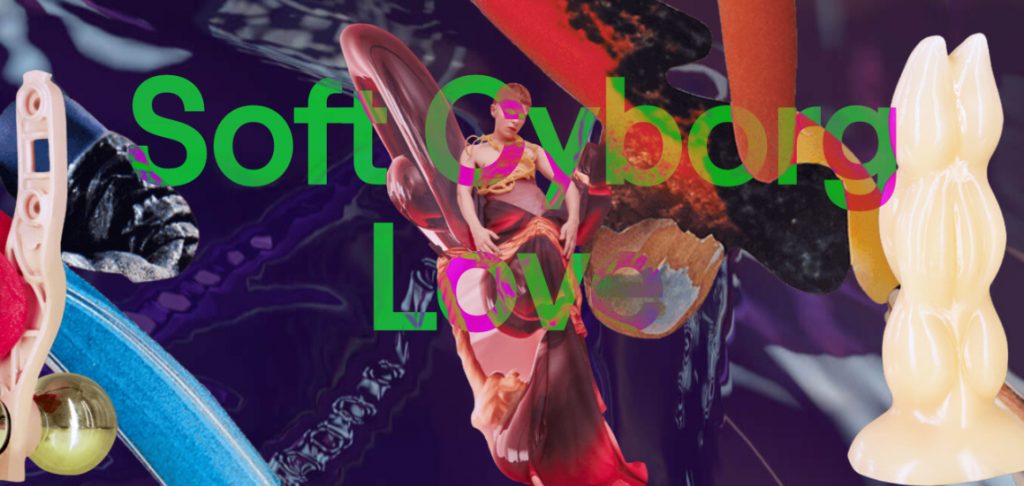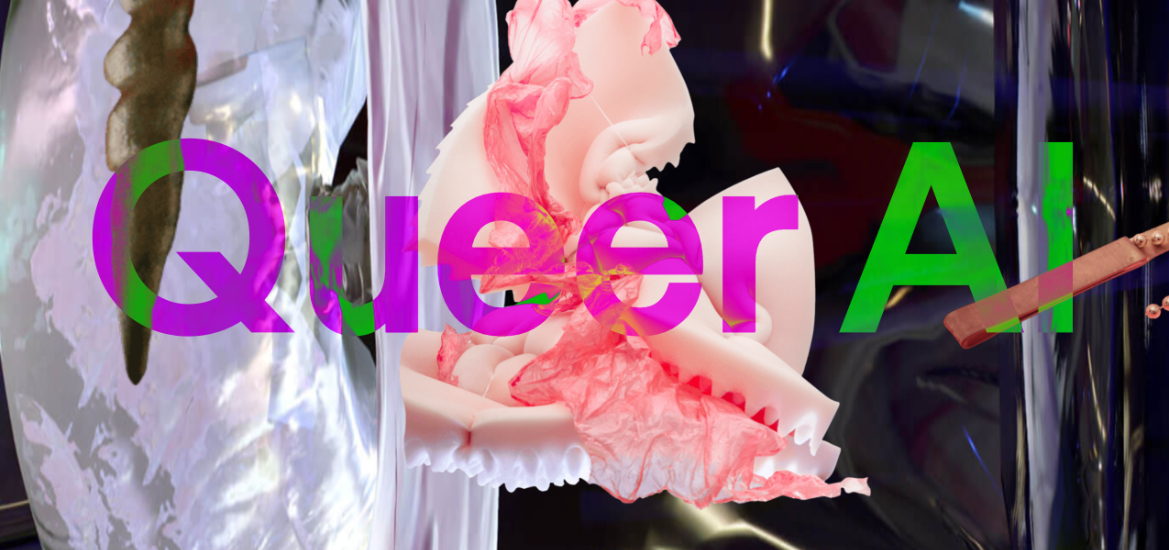Interview by Giulia Ottavia Frattini

Technology is frequently positioned as an element of progress that proceeds like a flaming arrow in time, somehow superseding the present by being visionary and incautiously oriented towards the future. While this is partially correct, it is nonetheless inescapable that technological advancement will always remain entrenched and rooted in the cultural, social, and historical context in which it is deployed or, at the very least, will be tied to it.
In this sense, along with a coherence that is undoubtedly inevitable and undamaging, lies the risk of echoing and mimicking the critical aspects taking hold in the current time without an actual form of progression, as understood by the restructuring of existing systems in favour of required shifts. This trickery appears to be especially true when we refer to technology in terms of the digital world and the long-debated coexistence between the physical and the virtual realms.
It, therefore, seems like a squandering of the implementation and dissemination of tools with nearly unlimited capacities and groundbreaking visions when, in any case, they will end up reiterating identical frameworks. The hazard is that past patterns are not adapted to current exigencies but rather that they, even if no longer eligible, are enhanced through these devices and brought into an “augmented reality” mode.
Nowadays, when we consider the intimate and emotional spheres, as they are fluid by nature, restless and unpreventable, receptive to exploitation and stereotyping or relegated to the sidelines in comparison to other areas that shape our societies that are considered more stable and reliable, an unmediated association with the affective relations generated on the Web occurs.
CROSSLUCID art collective questions and takes action about digital intimacy, specifically focusing on issues of sexuality and gender. Even though the Internet pretends to be an ocean with an endless number of possible horizons, in terms of romantic and interpersonal paradigms, in truth, what happens online replicates the closed and does not always embrace orders found in the offline dimension.
Stemming from this concept, the collective gives birth to the project entitled S(t)imulation.Zone (on view in the exhibition SWIPE RIGHT! Data, Dating, Desire until February 6, 2022), a hyperlinked platform resembling a landscape with a viscous, slimy, liquid, iridescent aesthetic that intends to evoke the translucency of the screen that we touch as a constant gesture of perpetual longing, as well as to give an idea of fleshy viscerality, typical of an intimacy that exposes itself, one layer after the other, and gets multiformly bare thorough tactile impressions.
The openness to emotional, sentimental, and sexual approaches that do not fall within the canons and the aim to stimulate the exploration of alternative perspectives are the fuel for the inception of the interactive website merging the voice of artists, collectives, writers, and platforms. Deconstruction is meant here as a beginning point for the formation of a multitude of positions, and multilevel browsing recasts this idea of an intimate journey to enact connections.
The Net, thus, is situated like an environment of bodily encounter, exchange of liquids, and catalyst of feelings for expressive human beings in constant transformation, by distancing from the fallacy of being users subjugated by algorithmic promises and mono-dimensional relations.


Would you like to introduce the people behind X.LUCID and illustrate the core strands of your research?
CROSSLUCID is an artistic collective (founded in 2017) comprising Sylwana Zybura and Tomas Toth and a node-like ensemble of conspiring collaborators.
Our hybrid practice – both commissioned and self-directed – encompasses film, photography, experience-led interventions and ‘world-building’, often incorporating multi-layered techniques of collage, assemblage, visual essay and most recently, CGI and the unbounded possibilities of Unreal Game Engine
. By interlacing archetypes and symbols, artificial intelligence (GAN) and science fiction and mythologies from across time and place, we create scenarios and novel formats in which we use storytelling to prototype and rehearse multimodal realities for emerging futures.
The prevailing topics that have crystallised throughout our dynamic practice and have become firmly embedded in our ongoing research include the concept of the networked self, rebalancing of the collective spirit and communal divination, intimacy and the potential for pleasurable actualisation through the digital sphere and the re-imagination of our alliance with technology as a new symbiotic biosphere / biodiverse system.
Was there a fundamental event in the evolution of your artistic practice? And how is your approach evolving through the projects you bring to life?
The development of our artistic practice has been and is somewhat organic. Originally stemming from more haptic ‘physical’ media (photography, collage, assemblage, film) and evolving towards incorporating more digital creation and realms, what interests us most, perhaps are their intersections or confrontations.
We like to think of our practice through the concepts of archipelagos, thought ecosystems with clusters of nodes and prototypes. We see it as continuous assembling and reassembling at both a micro and macro scale.
Each new artwork and project is seen as a capsule/node or tool/format in the exploration and manifestation of its unfolding world. By often intervening in opposition to widely accepted assumptions about the fabric of reality and possibility, their aim is to instigate conversation, reflection and re-imagination of paradigms through experience-driven and intuitive immersions.
By now, pretty much most of our projects align to one of three clusters, namely: 1) ‘Landscapes’ that explores and manifests around ideas of the networked self, 2) ‘Translucid’ that investigates the spiritual/perceptual/transcendental dimension of our co-existence within and with our environment and thus, technology, and 3) ‘Firstdate’ (which Stimulation.Zone is a continuation of) which looks at intimacy, pleasure and desire through the lens of growing virtuality.
Regarding “S(t)imulation.Zone”, how do you think intimacy – both collective and individual – has been relocated through the constant immersion within the digital realm?
Digital technologies have been shifting the paradigms of love and desire and determining new emotional and intimate behaviours, mediating our interactions through screens, gadgets, platforms, wearables and various high-tech artefacts, perpetuating a culture underpinned by the mentality of constant upgrade.
Moreover, their seductive powers have been promising incalculable pleasures, making searching and swiping a form of modern recreation of sorts, solidifying the belief that one should commit oneself only after a long (if not eternal) process of information gathering and optimisation.
In this ever-lasting form of inescapable tether, we have been searching for predetermined limerence based on the intimate preferences that we often don’t question to generously share with match-making platforms in the hope of finding the ‘perfect love’. Thus, a sad outcome is an experience of lingering desire(s) for something that rarely leads to the actualisation of pleasure, locked in the algorithmically engineered forms of ‘homophile’, a closed system where we are increasingly grouped with those most similar to us.
Any form of tangible intimacy and physical pleasure might become a self-inflicted taboo in the all too near future, where touch and even self-touch are regarded as dangerous and contaminating, only safely mediated and seeping through the screens. Contrastingly, digital interfaces can and do have a considerable potential to embody many forms and identities.
Their co-existence might help break from the limiting horizontal one-dimensionality and instigate more civic awareness or brand-new sensory avenues. For this interplay to succeed, though, a re-definition and conscious tailoring of digitally created spaces and their logic is required.
While ideating and curating Stimulation.Zone for a new safe space and a club ∄ in Kyiv we specifically focused on platforms and information nodes (featuring Paul B. Preciado, McKenzie Wark, Zheng Bo, Institute of Queer Ecology, Future of Sex, Queering the Map, Glitch Feminism, Dennis Cooper Sophie Lewis, and Queer AI amongst others), that could allow users to bleed into the modes of unbounded exploratory play, where ‘winning or losing’ or an ultimate climax reward per se, become secondary. A truly intuitive user experience allowing for a digital-derive of sorts, implemented with the help of RAM studio and bureau cool.
In the process of crafting these visual landscapes for intimate cruising during the lonely desert of the still ongoing pandemic in which context connection and the intimate sphere became ever so visceral, we focused on the interplay of physical collages formed from vintage erotic magazines, art magazines and a heap of National Geographics with digital assets sculpted in VR.
The latter has been our first full immersion within the digital realm, made only more pleasurable through the playful intermezzos. We fed each other with spoons of exciting and unusual tastes, which became moments of tasting anew, allowing for a heightened focus on the otherwise unstimulated sense in that sphere. With all its new weirdness and joy, we find precisely this interplay to be the hopeful potency informing both spheres with new possibilities for the transgression/unlearning of solidified preconceptions and their inherent boundaries.
As we develop Stimulation.Zone further, we aim to introduce a new tactility of navigation and develop a solid database of ever-evolving knowledge nodes directed by a wider community. For the curation process of the information nodes of the website, our plan is to partner with Relevant, a DAO with powerful and nuanced protocols and incentives for the collaborative curation of content and knowledge.
With this implementation, the site should become easily integrated within many websites and organisations, thus becoming a shared space for sharing valuable resources and unbiased information, providing sexual education and intimate knowledge sharing. The project seeks potential collaborators, e.g. institutions, NGOs, (queer) collectives, awareness teams, educational bodies and investors, to grow and actualise its ecosystem.
How do you perceive bodily exchanges and tactile experiences in a world where virtual and physical boundaries become more fluid?
A new tactile awareness has emerged, a form of a bi-location and a bi-sensation of pleasure, where established protocols IRL and NIRL converge. However, we cannot deny the fact that digital intimacy diminishes the requirements of the physical body, augmenting it with communication capabilities, where the translation of non-verbal communication like haptics, kinesics, vocal subtext or touch may require an entirely different set of skills.
New ‘wearable’ technologies (teledildonics, for example) promise unexplored sensory desires to pursue remote libidinal relationships, combining haptics with streaming and text chat reaching into the intimate space-maintaining affective bonds. However, while allowing for the virtual connection, they might also induce certain laziness and lack of care for the pleasure of others, orienting ourselves around the desire to perform perpetually.
On a cheerful note, in the emerging futures, we might share full-body telepresence with hyper-realistic avatars of lovers, hopefully also not necessarily in their humanoid form, inducing our brainwaves with customised instant mini-explosions of (n)ever-rendering jouissance.
What are the biases, misconceptions and current socio-cultural fabrications that, in your opinion, most urgently demand to be dismantled?
The hope for a better romantic efficiency, an optimised match or a perfectly crafted algorithmic love as a substitute for tactile connection seems somewhat unachievable, resulting in candid algorithmic anxiety. Perhaps the perpetual upgrade overwrites what is human.
Technology cannot restore brittle bonds or substitute ones that don’t exist; it can only enhance the existing ones. Then, perhaps, we can embrace a somewhat human idea of fragility and sincerity. Hence, a concept of a glitch (after Legacy Russel’s “Glitch Feminism Manifesto”) as a disruptive element, as a form of resistance and a component of activist and personal practice to “inject our positive irregularities into systems as errata, activating new architecture through these malfunctions.”
Suppose we, communally, transgress the idea of perpetuating existing biases, stratification of class, race and ableism-based hierarchies, male-dominant POVs and other limited scenarios taken over from the current realities, especially in the digital / VR realm. In that case, it can perhaps transform the technological mitigators into enhancement tools for intimate pleasures and playfully augment the lubricity of flesh.
Solitude or loneliness, how do you spend your time alone?
Notably, in current conditions, in which our body and mind need a well-deserved break from ever-flowing information streams, perpetually infused with the narratives of doom, we are striving for reconnection with nature to regain a sense of wonder, immerse ourselves in its mythic imaginations and catalysing the purity of daydreaming.






